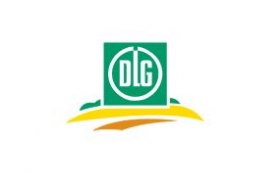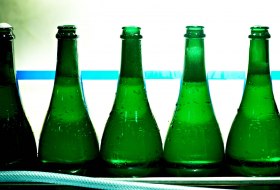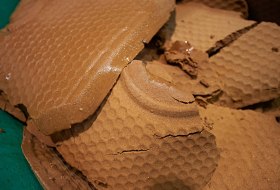
searchMenu



In sparkling wine production, by periodically shaking and turning the bottle, the yeast contained in the bottle is transported towards the bottle neck, where it forms a yeast caddy. This then is frozen. Subsequently, the yeast plug is removed, which is referred to as "disgorging".

Sometimes, inside of bottles filled with older, extract-rich red wine one finds a dark red brownish deposit, called depot. It does not mean that the wine has a default, it only is a natural reaction for aged wine. When pouring the wine, the deposit is moved around, mixing with the wine. Even though it has no flavour, it can be a rather unpleasant feeling when drinking it. This can be avoided by decanting the wine. The wine is poured into a decanter and then slowly poured into the glass. While pouring, the wine can be…

Demeter is a registered trademark and stands for products that were produced biodynamically.

Abbreviation for "Deutsche Landwirtschaftsgesellschaft" (German Agricultural Society)

Expression for the grape must used for sweetening a wine. It also means the grape must/ sugar dissolved in wine, that is mixed with yeast and added to the base wine in the production of sparkling wine. Here, a distinction is made between the filling dosage for the initiation of the second fermentation and the shipping dosage which is added to the fermented sparkling wine in order to round it off and to compensate for the loss of sweetness caused by the second fermentation. The shipping dosage characterizes the flavour type of…

The deleafing of the grapes is a measure n the vineyard, that is taken in order to improve the quality of te grapes. The grapes are better ventilated after removing some of the leaves and dry faster after rainfall. As a result, the grapes are less prone to diseases such as botrytis. On the other hand, in hot summers, the lack of sun protection increases the risk of sunburn for the grapes. Some experts recommend deleafing only on the side facing away from the sun. The deleafing can be done by hand or by machine. In fact, even…

Separation of the berries from the stems. This is to prevent the tannin contained in the stems from entering the wine, as with too much tannin, the wine would taste bitter.

The acid content of the must of certain grape varieties can be rather high in vintages with unfavorable weather conditions (late grape ripeness).When that happens, the wines produced from it would be inharmonious without reducing the acidity. The deacidification is done either with lime carbonate or by degradation of malic acid by biological means .

Also called lees or bottoms; remains of the grapes, like the skin or the pulp, that are in the wine. But also residues (dead yeast cultures) after fermentation. Most of the deposit is filtered out through the filtration , so that in the final product it is no longer available.